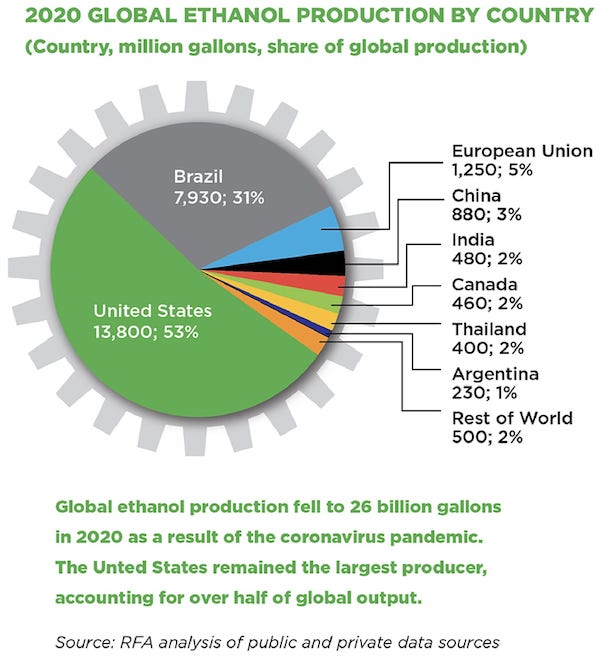The American Coalition for Ethanol (ACE) wants to put the spotlight on E85 as a viable solution to lowering vehicle carbon emissions. The group recently unveiled an ethanol-powered vehicle demonstration to counter the narrative that electric vehicles are the only path to achieving net-zero greenhouse gas (GHG) emissions. According to ACE, hybrid flex-fuel vehicles powered by ethanol already have cleaner lifecycle greenhouse gas (GHG) emissions than plug-in electrics, and could reach net-zero long before EVs on the market today.
ACE Senior Vice President Ron Lamberty explains that full electric and plug-in hybrid electrics are only as clean as the electricity used to charge them, or the gasoline used to power them. According to Lamberty, from a total greenhouse gas reduction standpoint, it makes sense for a hybrid to use the cleanest liquid fuel available when charging and not running on electricity, and that’s E85. For those not familiar, E85, also called flex-fuel, is an ethanol-gasoline blend containing 51% to 85% ethanol, depending on geography and season. E85 can be used in flex-fuel vehicles (FFVs), which are specially designed to run on gasoline, E85, or any mixture of the two. However, Lamberty notes that no major automakers offer a flex-fuel hybrid vehicle. To prove his theory, he had to make his own.
Earlier this summer, Lamberty bought a Hybrid Electric Ford Fusion and drove it to California where he met with E85 wholesaler Pearson Fuels, owners of eFLexFuel Technology, to install their flex-fuel conversion kit on the vehicle. Lamberty says the installation only took about 45 minutes even though it was the first time the mechanic had ever installed one. Lamberty drove the newly converted Hybrid Electric Flex Fuel Ford Fusion, which he nicknamed “HEFF,” back to South Dakota to begin a three-year demonstration project.
The front-wheel-drive midsize sedan starts up on electricity and is powered by a 2.0-liter, four-cylinder engine capable of using up to E85 matched to an electric motor for a combined 188 horsepower. Lamberty calculates a hybrid electric vehicle running on low-CI E85 could obtain a total GHG score as low as 20 to 25 grams of CO2 per mile, which is lower than current EPA total GHG emissions calculations for PHEVs or full EVs.
The EPA itself has overlooked the option as well. “EPA assigns vehicles a carbon intensity (CI) score based on how many grams of CO2 per mile are emitted by operating that vehicle,” explains Lamberty. “While scores exist for hybrids, plug-in electrics, plug-in hybrids, flex-fuel, and standard vehicles,” Lamberty says hybrid electric flex-fuel vehicles are not represented.
“If regulators at EPA and CARB (California Air Resources Board) would properly assess lifecycle GHG by accounting for the continued advancements in ethanol production facilities, improvements in on-farm practices in growing biofuel crops, and factoring in carbon capture and sequestration, the CI score of ethanol can be near zero or below zero,” Lamberty said. “To top it off, ethanol-powered vehicles can be far more affordable to the average driver than the premium-priced vehicles dominating the EV marketplace today so more people could start reducing carbon right now.
ACE says it will keep the public updated on the project. Learn more about HEFF at the ACE website HERE. (Sources: ACE, Agwired, Ethanol.org)







